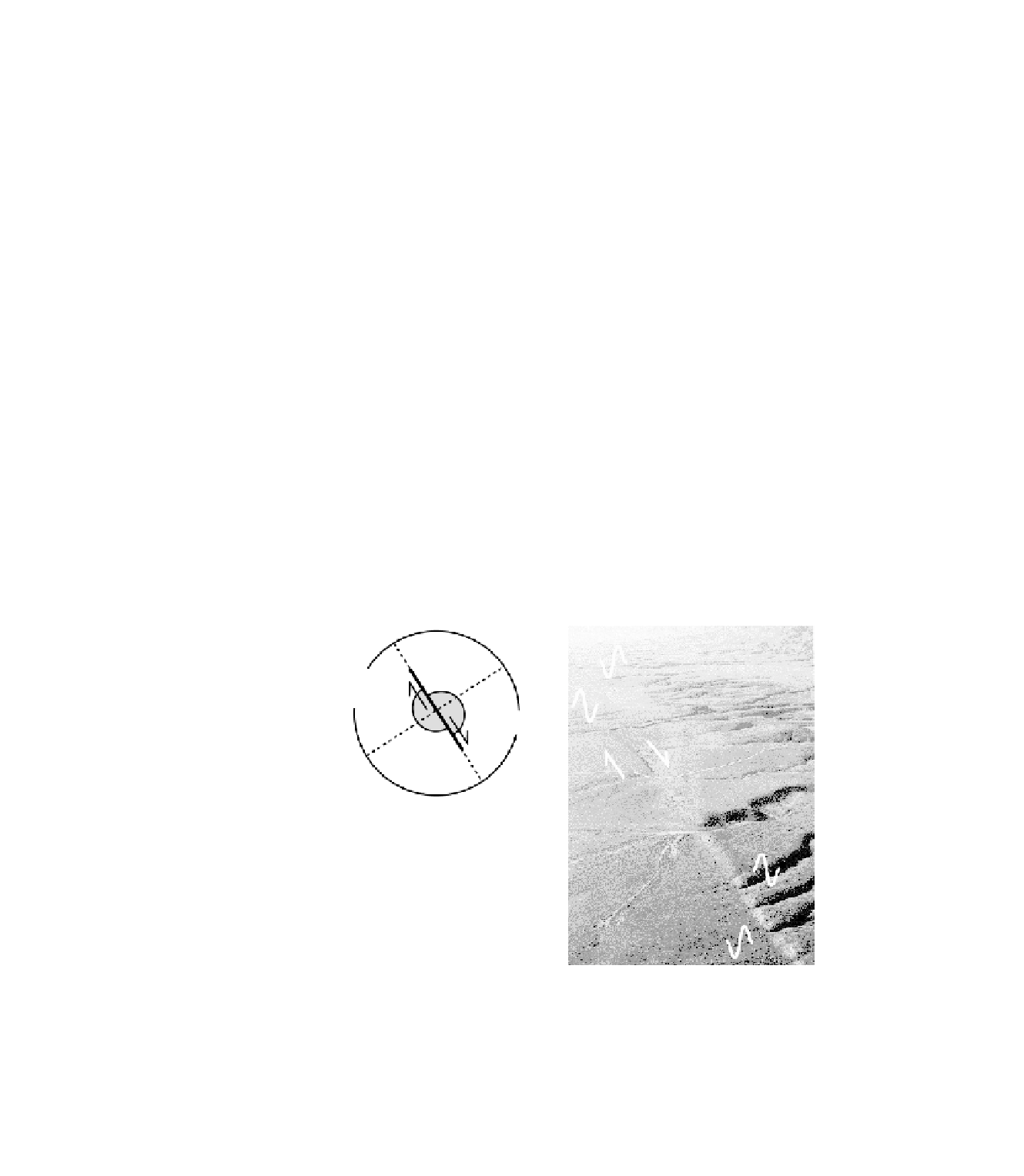Geoscience Reference
In-Depth Information
4.17.6
Earthquakes and strain
slip). The remainder dissipates over weeks or months by
aftershocks as smaller and smaller roughness elements on
the fault plane shear past each other until all the strain
energy is released. If the fault responsible breaks the
Earth's surface then the coseismic deformation is that
measured along the exposed fault scarp whose length may
reach tens to several hundreds of kilometers.
Different types of faults give rise to characteristic first
motions of
P
-waves and it is this feature that nowadays
enables the type of faulting responsible for an earthquake to
be analyzed remotely from seismograms, a technique known
as
fault-plane solution
. Previously it was left to field surveys to
determine this, often a lengthy or sometimes impossible task.
The first arrivals in question are those up or down peaks
measured initially as the first
P
-wave curves on the seismo-
gram record (Fig. 4.142). It is the regional differences in the
nature of these records caused by the systematic variation of
compression and tension over the volume of rock affected by
the deformation that enables the type of faulting to be deter-
mined. This is best illustrated by a strike-slip fault where
compression and tension cause alternate zones of up (posi-
tive) or down (negative) wave motion respectively as a first
arrival wave at different places with respect to the orientation
of the fault plane responsible (Fig. 4.142). When plotted on
a conventional lower hemisphere stereonet (Cookie 19),
with shading illustrating compression, the patterns involved
are diagnostic of strike-slip faulting.
In the introduction to this chapter we noted that
earthquakes were marked by release of seismic energy
along shear fracture planes. This energy is released partly
as heat and partly as the elastic energy associated with rock
compression and extension. In the elastic rebound theory
of faults and earthquakes the strain associated with tec-
tonic plate motion gradually accumulates in specific zones.
The strain is measurable using various surveying
techniques, from classic theodolite field surveys to
satellite-based geodesy. In fact, the earliest discovery of
what we may call
preseismic strain
was made during inves-
tigations into the causes of the San Francisco earthquake
of 1906, when comparisons were made of surveys docu-
menting
c
.3 m of preearthquake deformation across the
San Andreas strike-slip fault. We have already featured the
results of modern satellite-based GPS studies in decipher-
ing ongoing regional plate deformation in the Aegean area
of the Mediterranean (Section 2.4). All such geodetical
studies depend upon the elastic model of steady accumu-
lating seismic strain and displacement. But then suddenly
the rupture point (Section 3.15) is exceeded and the
strained rock fractures in proportionate or equivalent mag-
nitude to the preseismic strain. This
coseismic deformation
represents the major part of the energy flux and is dissi-
pated in one or more rupture events (order 10
2
-10
1
m
(c)
(a)
Down,
pull,
tension
Up,
push,
compression
Up,
push,
compression
(b)
Down,
pull,
tension
Fig. 4.142
To illustrate the use of first motion polarity in determining the type of fault slip, in this case the right-lateral San Andreas strike-slip
fault; (b) 1906 San Francisco quake ground displacement; (c) San Andreas dextral strike-slip fault and schematic first
P
-wave arrival traces.











Search WWH ::

Custom Search